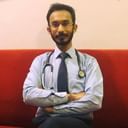Saans Pulmonary Rehabilitation Program
What is Pulmonary Rehabilitation?
Pulmonary Rehabilitation (Rehab) is a medically supervised program that helps to improve the health and well being of people who have pulmonary problems.
Rehab programs include endurance training, chest therapy, education on lung hygiene and healthy living, counseling to reduce stress & trigger factors and smoking cessation thus helping you return to an active and healthy lifestyle.
Who requires Pulmonary Rehabilitation?
People with following diseases require Pulmonary Rehabilitation:
-
Chronic Obstructive Pulmonary Disease (COPD)
-
Chronic bronchitis
-
Interstitial lung diseases
-
Obesity and Breathing Disorders
-
Pleural Diseases
-
Lymphadenopathies
-
Muscular dystrophy
-
Combined cardio-pulmonary diseases
What are the facilities for Pulmonary Rehabilitation at SAANS?
SAANS Foundation has a dedicated Pulmonary Rehab facility with separate areas for postural drainage, oxygen therapy and Non Invasive Ventilation, nebulisation and telemetric ECG monitored exercise systems i.e. ergo cycles, stepper and cross trainer; a gymnasium for pre-class warm-up and resistance training classes; Lung function testing labs; and a dedicated area for patient education.
The Pulmonary Rehab team
A multi-disciplinary team consisting of
-
Physiatrists (rehab physician)
-
Pulmonologists
-
Nurses
-
Exercise Physiologists
-
Physical and Occupational Therapists
-
Psychologists and Wellness Coach
-
Nutritionists
What is the duration of the program?
As per patient requirement, the program duration can vary from 4-6 weeks to lifelong.
What can one achieve through this program?
The goal of this program is to prevent and limit the physiological and psychological effects of pulmonary illness and to improve overall cardio-pulmonary status and health. This is accomplished by developing individualized programs of exercise, education and lifestyle modification that are tailored to individual needs and abilities.
Three phase program
Phase I (Initial)
This is an inpatient program which starts at the time of hospitalization. It aims to initiate early mobilization to reduce the effects of de-conditioning. It consists of oxygen therapy, chest wall manipulation, nebulization, postural drainage, breathing exercises and incentive spirometry to improve oxygenation. This is continued with a walking and exercise program at home or till patient return back to the hospital for Phase II.
Phase II (Conditioning Phase)
This consists of a comprehensive program to modify the aggravating factors for lung disease along with endurance training. This consists of chest care, aerobic exercise, stress management, smoking cessation, behavior modification, nutritional advice and patient and family education. The Phase II can begin after stabilization of the early symptoms. This is conducted in the form of group sessions or classes, one session usually last for 60-90 minutes. Frequency is 3-5 times a week to complete a total of about 20 sessions. Initial sessions of aerobic training are conducted with electrocardiographic monitoring. All sessions are physician monitored conducted by trained staff.
Phase III (Maintenance Phase)
This aims to continue the benefits gained by patients during Phase II. It consists of continuation of the aerobic exercise program but at a lesser frequency of 3 times a week at home/in a gymnasium/at a hospital.



+1.svg)
